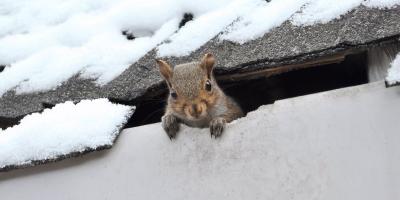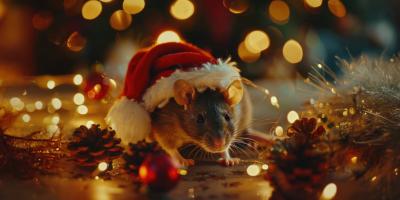If “Helicopters” Are Landing In Your Yard, You May Have The Perfect Landing Spot For Fall Invaders

Usually found peaking out from blades of grass or dulling the vibrancy of freshly-raked piles of fall foliage, these dried up winged pods are crashing into yards all over New England this time of year. While they slip through rakes a little easier than leaves, it’s what slips into homes throughout the region that many homeowners would prefer to bag-up. Knowing which pest rides into your yard via “helicopter” can help you stop an infestation before it happens.
Kids love to throw these winged pods up in the air and watch the way they twirl back to the ground, but the way that these natural aviators fly, and land, actually tells us a lot about them. “Helicopters” are called samaras, which is the proper name for the winged fruits that contain the seeds of various maple trees. Maples have impressive canopies that provide some of the best autumn scenery in the Northeast. This dense shade covering, however, joins forces with their notorious surface roots to make any growth underneath all but impossible, especially for other maple trees looking to take similar root.
To ensure that they maintain their stronghold as the forerunners in foliage, maple trees developed samaras to take flight instead of dropping straight down. The nearly perfect design of their wings allows for the seeds to spread out and away from the parent trees, helping them reach areas with more sunshine. The samaras then land vertically between blades of grass, with the seed (heaviest) end closest to the ground and ready to be embedded in the soil. If you have “helicopters” littering your property, you have a maple seed problem, and these particular seeds are the meal of choice for one of New England’s most common fall invaders.
A Compound Problem
To be fair, only one particular maple tree bears the seeds that draw the fall invaders we’re talking about here. The boxelder tree, often considered a weed tree due to its prolific sprouting, is a common New England maple. What differentiates this tree the most are its compound leaves that resemble those of ash trees. While the weed of the maple family may not add much value to your curb appeal for prospective buyers, Boxelder Bugs will be (quite literally) chomping at the bit to move in.
With a yard full of boxelder trees, your home can provide both sustenance and the perfect overwinter refuge for the Boxelder Bug. If you are having trouble identifying the type of maple tree on your property, catch a bug instead! Boxelder bugs are very easily distinguishable from other bugs due to their vibrant orange and red markings that contrast from the rest of their dark, black bodies.
Being that these bugs have their dietary restrictions listed right in their names, you won’t have to worry about them feeding on much else if they do make it inside your home. Unless they are entering your home in large numbers, which is common as temperatures start to drop, there are bigger bugs to squash - though you may not want to.
Thinking Outside The Boxelder
The Boxelder Bug is often mistaken for two other very common New England fall invaders, the Brown Marmorated Stink Bug and Western Conifer Seed Bug. The three bugs look similar, with the Seed Bug being closest in appearance to the Boxelder Bug. Both of the Boxelder’s doppelgangers will produce a pungent odor as a defense mechanism when threatened or crushed, though the Stink Bug is more prone to do so. Seed Bugs that feed on pinecones emit an odor that is, you guessed it, pine scented. Stink Bugs smell more like coriander. The biggest threat of this threesome is the Brown Marmorated Stink Bug, and it has nothing to do with its odor.
While the Seed Bug and Boxelder Bug both have their meals of choice, the Stink Bug feeds on a wide variety of host plants. From apples and other fruits to ornamental plants and beans for human consumption, the Stink Bug will ravage through a kitchen in search of food, ruining fresh produce and plants along the way. These bugs can spread disease and cause allergic reactions due to their direct interaction with fresh foods in the kitchen.
No Matter The Tree, Keep Your Home Pest Free
Boxelder Bugs and other species that overwinter indoors are starting to move in as fall is upon us. It’s time to act now to prevent it from happening, and you don’t have to chop down any of the trees on your property to do so.
The JP Pest Services Home Protection Plan consists of two pest-fighting treatments that are performed typically during this time. This program targets the cracks and crevices of your home where these invading pests can gain entry. Stopping these pests at their points of entry is vital because once they’re inside, they’re more difficult to eliminate. Contact us today to keep these fall invaders out!



